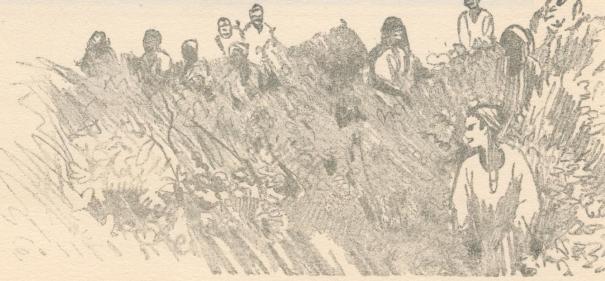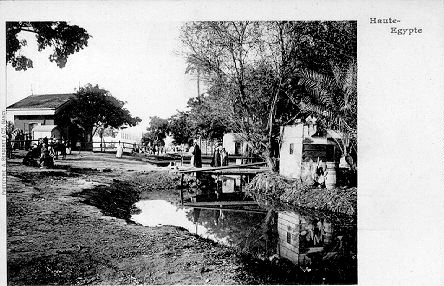
Unlike the situation in comparable developing countries, Egyptian agriculture is geared overwhelmingly toward commercial rather than subsistence production. Field crops contribute some three-fourths of the total value of Egypt’s agricultural production, while the rest comes from livestock products, fruits and vegetables, and other specialty crops. Egypt has two seasons of cultivation, one for winter and another for summer crops. The main summer field crop is cotton, which absorbs much of the available labour and represents a notable portion of the value of exports. Egypt is the world’s principal producer of long-staple cotton (1.125 inches [2.85 cm] and longer), normally supplying about one-third of the world crop; total Egyptian cotton production, however, constitutes just a tiny fraction of the global yield.
Among other principal field crops are corn (maize), rice, wheat, sorghum, and fava (broad) beans (fūl). Despite a considerable output, the cereal production in Egypt falls short of the country’s total consumption needs; a substantial proportion of foreign exchange is spent annually on the import of cereals and milling products. Other important crops include sugarcane, tomatoes, sugar beets, potatoes, and onions. Many varieties of fruit are grown, and some, such as citrus, are exported.
Until the completion of the Aswān High Dam in 1970, the pattern of inundation and falling water, of high Nile and low Nile, established the Egyptian year and controlled the lives of the Egyptian farmers—and most Egyptians were tied to a life on the land—from birth to death, from century to century. On the regular behaviour of the Nile rested the prosperity, the very continuity, of the land. The three seasons of the Egyptian year were even named after the land conditions produced by the river: akhet, the “inundation”; peret, the season when the land emerged from the flood; and shomu, the time when water was short. When the Nile behaved as expected, which most commonly was the case, life went on as normal; when the flood failed or was excessive, disaster followed.
Construction of the Aswān High Dam enabled not only control of the Nile’s floods but also the reclamation of vast tracts of land for farming. The total land reclaimed as a result of the Aswān High Dam project reached more than 1,000,000 acres (400,000 hectares) by 1975, in addition to some 700,000 acres (284,000 hectares) converted from basin (one crop per year) irrigation to perennial irrigation. During the same period, however, an agricultural area almost as large was lost to industry and growing towns. Conscious of the need to conserve and to increase arable land, the Egyptian government has encouraged the establishment of new settlements in desert areas and has promoted projects to bring large areas of unproductive desert under cultivation. The New Valley project, which was begun in 1997, is slated to bring roughly 500,000 acres (200,000 hectares) under production in the southern Western Desert by pumping water from Lake Nasser through a long canal. Major construction was completed by 2003. Similar programs have been undertaken in the western delta and the Sinai Peninsula.
Egypt has been the scene of one of the most successful attempts at land reform. In 1952 a limit of 200 acres (80 hectares) was imposed on individual ownership of land, and this was lowered to 100 acres (40 hectares) in 1961 and to 50 acres (20 hectares) in 1969. By 1975 less than one-eighth of the total cultivated area was held by owners with 50 acres or more. The success of Egyptian land reform is indicated by the substantial rise of land yields after 1952. This was partly the result of several complementary measures of agrarian reform, such as regulation of land tenure and rent control, that accompanied the redistribution of the land. Rent control has since been discontinued for land and new constructions but remains in effect for older real estate.
Egypt’s biological resources, centred around the Nile, have long been one of its principal assets. There are no forests or any permanent vegetation of economic significance apart from the land under cultivation. Water buffalo, cattle, asses, goats, and sheep are the most important livestock. Although animal husbandry and poultry production have been promoted by the government, growth has been sluggish.
Following the construction of the Aswān High Dam, the Egyptian government encouraged the development of a fishing industry. Construction of such projects as a fish farm and fishery complex at Lake Nasser have led to a considerable increase in the number of freshwater fish and in the size of the yearly total catch. At the same time, catches of sea fish in the waters off the Nile delta have declined, because of the change in the flow and character of Nile water after the construction of the Aswān High Dam.
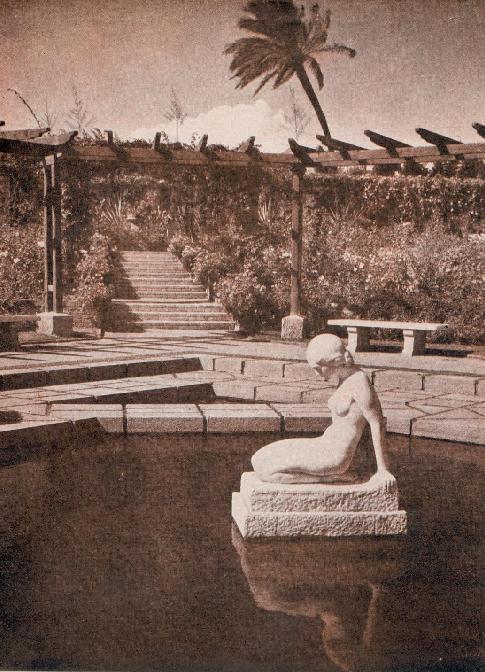
The former has now completely disappeared but a few specimens of it still existed until the great cattle plague of 1863. A breed of sheep, common in the Middle Kingdom, is also extinct. It had long, horizontal, twisted horns; the other variety with grooved horns still survives. Goats and pigs were common in Ancient Egypt and so was the ass, indispensable for transport of food and water. The camel was not a domestic animal. It appears in the records of the First, the nineteenth, and the twenty-fifth Dynasties but was probably an importation as it certainly was in the Roman period when it was used as a water carrier. Not until the Arab invasion did the camel become an acclimatized domestic animal in Egypt. There is no record of the horse until the eighteenth Dynasty and it then appears to have been used solely for drawing chariots. There was a great variety of dogs used for hunting, as scavengers and as domestic pets, but curiously enough there is no record of the cat until as late as the twelfth Dynasty.
A typical example of Ancient Egyptian agricultural skill and one which has never been equalled in any other country is the artificial hatching of eggs. The domestic fowl was unknown in Egypt before the Deltaic Dynasties but Diodorus in the first century B.C. describes how its eggs were hatched artificially, as they are at the present day, in ovens of which the heat is tested by the hand alone. The method, primitive though it be, is extraordinarily successful and, simple though it may seem, requires a very great deal of skill which in most cases is hereditary. The "hatcher" in an Egyptian village today is almost invariably the son, grandson and descendant of forefathers who have for centuries gained their livelihood by incubating the eggs from all the neighbouring farms.
Modem irrigation and the introduction of the cotton plant have effected many changes in the agricultural life of Egypt. By means of canals, "basins", dams and barrages, the Nile flood is now utilized to a greater extent than ever before. The result has been a great increase in the area of cultivated
or cultivable land.
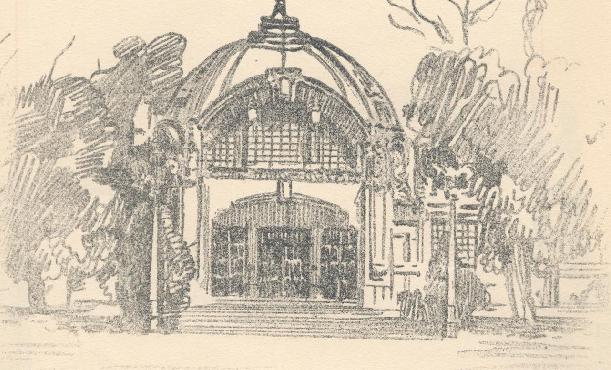
There are three agricultural seasons: (1) summer (sefi) from April 1 to July I, when crops are grown only on land under perennial irrigation; (2) flood (Nili) 1st August to 30th November; and (3) winter (shetwi) 1st of December to 31St of March. Cotton, sugar and rice are the chief summer crops; wheat, barley, flax and vegetables are chiefly winter crops while maize and millet are Nili or flood crops.
Maize is largely grown for home consumption, its grains forming the staple food of the Egyptian peasantry. The stalk of the maize is also a very useful article. It is used in the building of houses, as fuel and, when green, as food for cattle.
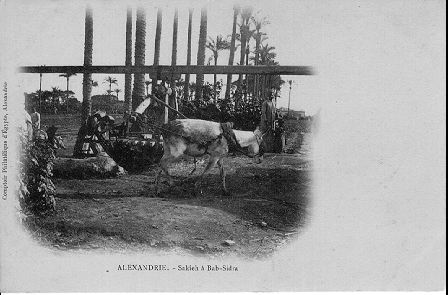
There is little pasture-land in Egypt and clover (bersim) is largely grown as food for cattle and horses. Vegetables grow readily and their cultivation is an important item of fellahin husbandry. The onion is grown in large quantities in Upper Egypt,
chiefly for export. Tomatoes are also grown for export and other vegetables raised are leeks, marrows, cucumbers, cauliflowers, lettuce, turnips, artichokes and spinach

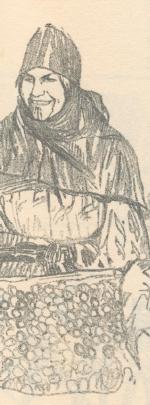
One of the things that always strikes the visitor to Egypt is the great number and variety of flowering trees. Acacias, mimosas, ilex and tamarisk grow readily under the Egyptian sun and an avenue of flametrees in full bloom -there are many in Cairo, Alexandria and Port Said, is a sight of unforgettable beauty.
Here seems the place to mention Egypt's wealth of flowers. Paradoxical as it may appear, most of the wild flowers found in Egypt flourish in the desert. They come up almost overnight whenever a shower of rain moistens the ground. In the palm groves of the desert oases as in some of the narrow ravines in the eastern desert, ferns and flowers grow in a luxuriant abundance unknown to northern climes. Of these wild flowers the most common are the yellow daisy, the poppy, the iris, the
asphodel and the ranunculus.
The gardens of Egypt are far-famed and given a good supply of Nile earth and Nile water there are very few flowers that cannot be grown. Among the more usual cultivated flowers are the rose (which has always been a favourite with Arab peoples), the jasmine, the narcissus, the lily, the oleander, the chrysanthemum, the geranium, the dahlia, the henna plant, the helianthus and the violet. The lotus, so greatly prized by the Ancient Egyptians, is found in the Delta though never in the Nile itself. There are two varieties of this celebrated water-lily, the one white, the other blue.
